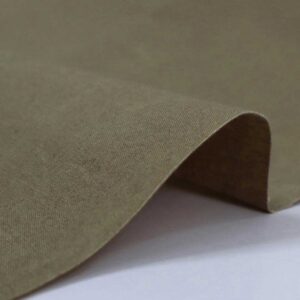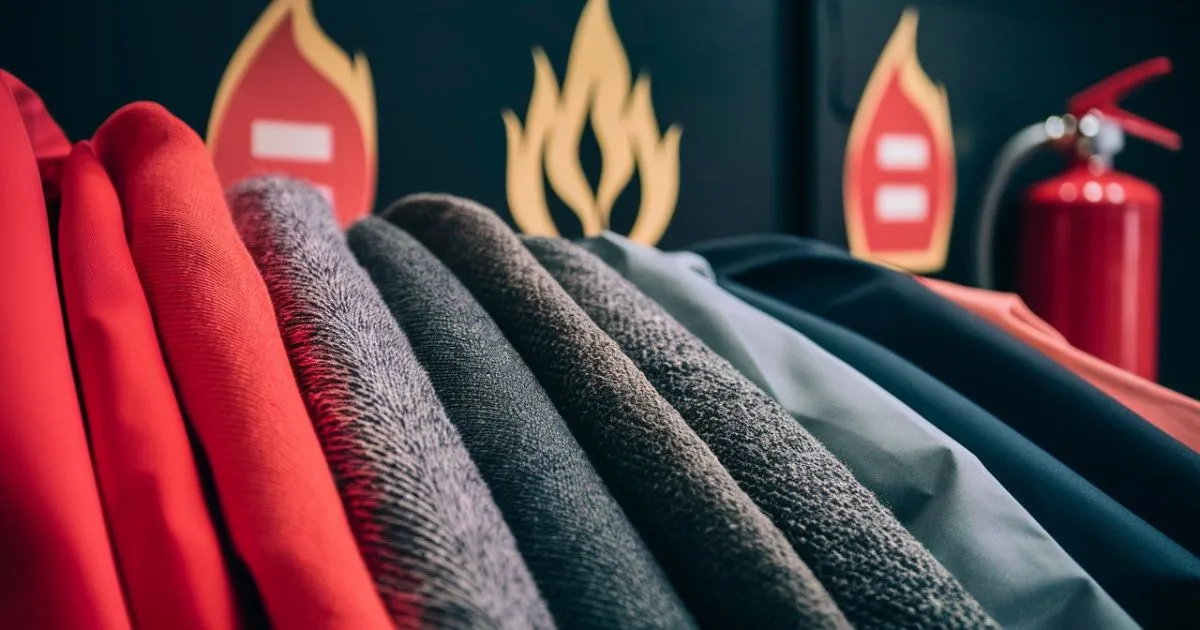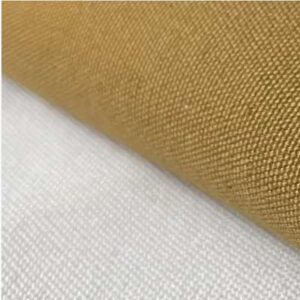Fire Retardant Fabrics Enhancing Safety in Homes and Industries
These are fabrics that will not allow fire hazards to spread. Fire retardant fabrics contain such a material that acts as a retardant to stop the spread and cause some skin burns. They are used to make upholstery, curtains or other home textiles like tablecloths and bed linens.
This might be in the form of chemicals, coatings or other fabric retardant features. The most frequently employed materials in fireproofing fabric are halogenated elements which produce a gas when they come into contact with heat that insulates the flame from oxygen. Coatings and treatments create a protective barrier between the fabric and flames preventing burning.
Fundamentals of Fire Retardancy
Regarding the fire retardancy of fabrics several basic concepts need to be grasped fully. The fire-retardant property of materials is identified as the capacity to resist burning when exposed to flame or higher temperature. This is achieved by coating the material with fire-retardant substances introduced to the fabric at its point of manufacture.
Fire-retardant chemicals function in varying ways to achieve fire retardancy. Certain chemicals work by releasing water vapor upon heating, thereby cooling the fabric and preventing ignition. Another works by creating a shield layer around the cloth extinguishing potential flames.
In the end, knowing the basics of fire retardancy is important for all persons dealing in fabrics-but even more so for those working within industries likely influenced by flame reduction standards. Knowing a little bit more about flame retardant textiles and the rules that regulate them will also ensure that our products are safe and efficient.
Chemistry of Fire-Retardant Fabrics
Fire-retardant fabrics are chemically treated textiles to reduce flammability and flame spread. Fabrics can be chemically treated in two ways one utilizes inherent fire-resistant fibers and the other chemically treats a fabric.
Inherent Fire-Resistant Fibers
Fire-resistant fibers of original fire resistance. These are fibers made or treated to achieve high degrees of stabilization against burning and they utilize a broad range of toxic chemicals in the process. Types of fibers known to have these properties are aramid, mod acrylic and polybenzimidazole fibers.
They are then made into products such as Kevlar well-known aramid fibers used in protective clothing for firefighters, military personnel and industrial workers. Being non-flammable and having a high melting point, they are desirable for use whenever heat protection is required. One popular use for mod acrylic fibers is in constructing flame-resistant clothing for industrial workers. The fibers are naturally fire-resistant and do not melt or drip when flammable.
Chemically Treated Fabrics
They are fabrics based on chemicals to protect against flammability, retard explosion and flame propagation properties. The first is when fabrics are made using intrinsic fire retardant fibers and the second occurs in chemically treating a fabric.
Made from chemically treated fabrics flame-resistant clothing employed in factories, firemen, the military etc. These materials are also used in textiles and upholstery at home to decrease the probability of fire.
Applications of Fire-Retardant Fabrics
Fire-retardant fabrics can be used for various purposes as they either resist burning or delay it. This section will mention some of the most popular uses for fire-retardant cloth.
Protective Clothing
One of the key applications for fire-retardant fabrics is protective clothing. Workers in the fields of oil and gas, chemical rubber cement, insulation, mechanic maintenance, labor production, Iron foundry and automotive industry transportation have many hazards from fire exposure that require wearable products to protect their wearers against moderate temperatures and flames. They are otherwise used to make antifoam fabrics which give protection from fire or heat.
Upholstery and Drapery
These fire-retardant fabrics are also ideal for upholstery and drapery. The proof fire-retardant fabrics for seating and drapery the film is installed for its curtains, carpets and furniture in public spaces such as hotels, hospitals or theatres.
Industrial Uses
Fire-retardant fabrics are used in multiple industrial applications. These types are usually utilized to produce conveyor belts, insulation and protective machinery covers. Conversely fire-retardant fabrics in the automotive industry are incorporated into seat covers and carpets.
Innovation and Future Trends
Technology in Fire Retardancy
Nowadays the employment of technology in fire retardancy is an emerging and interesting field to be studied. One interesting possibility is to use nanoparticles in textile and fabric-based fire retardant applications to help slow the spread of flames. A recent study of flame-retardant coatings including silica nanoparticles in conventional coatings suggested that introducing these particles could benefit fire retardancy functionalities. Carbon nanotubes have also been used to reduce the flammability of fabrics largely due to their high thermal stability and material strength. Consequently, Hassan Brothers Textile anticipates a growing field here after with ongoing interest in related experimental advances.
Sustainable Fire Retardant Solutions
Sustainability in fire-retardant chemicals is playing a significant role as the use of these versatile chemical compounds to reduce risks and damage from fires continues to increase. For example, natural materials like chitosan and lignin are a new research area for flame-retardancy. The flame-retardant properties of these compounds make them suitable as a fabric finishing agent. Innovative manufacturing techniques such as 3D printing are also being researched by the Hassan Brothers Textile to develop sustainable and fire-retardant fabrics.
The field of fire retardancy is always changing. Hassan Brothers Textile expects to continue seeing new developments in the coming years. However, all must possess a level-headed approach more stringent use criteria are enacted against chemicals due to emergent environmental concerns. Technology and sustainable solutions are only two that may hold some promise for enhancing fire retardancy performance qualitatively so we will have to see what the future brings.

Maintenance of Fire-Retardant Fabrics
Fabrics fire retardancy must be preserved to ensure protection against fire hazards. While the flame resistance of fire-retardant fabrics does not diminish over time. Its life can be pro longed with proper and regular cleanings.
The manufacturer provides the following care and cleaning instructions. Avoid heavy chemicals and abrasive cleaning tools as these may deteriorate the material in the fire-retardant layer.
Durability and Lifespan
Besides constant check-ups fire-retardant fabrics must be kept in a cold and dry place far from sunlight or heat. Heat and sunlight can damage the fire-retardant coating decreasing the fabrics protection.
Following these guidelines for cleaning, caring and storing your fire retardant fabrics can help protect your customers lives from flames in many winters.
Conclusion
Applications of fire retardant fabrics in different industries. Some of the most common applications for fire-retardant fabrics include protective work wear, upholstery and drape fabrics & industrial end uses.




